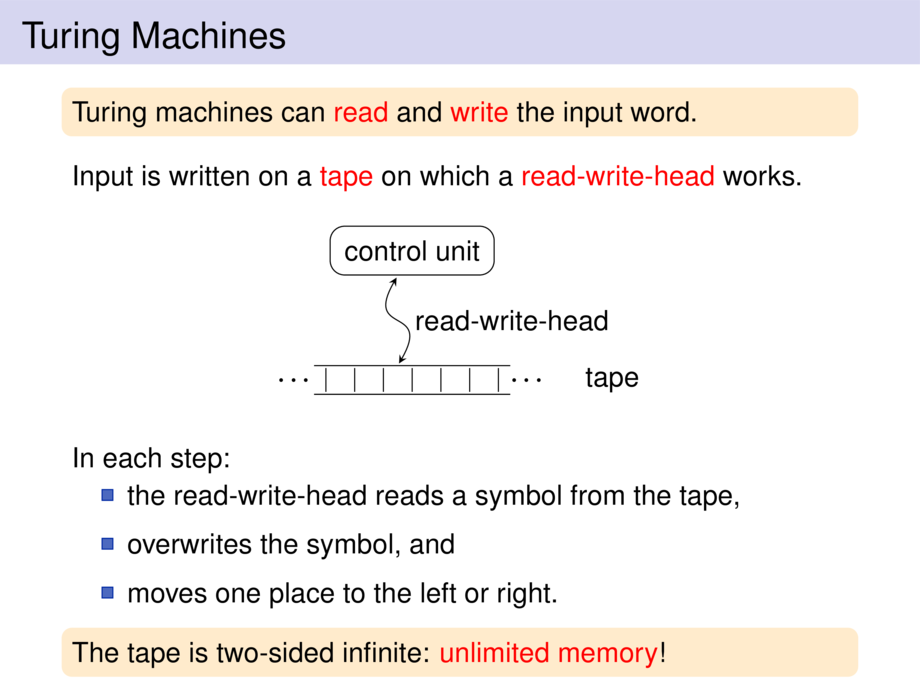



































































































5/85
\begin{frame}{Turing Machines}
\begin{goal}{}
Turing machines can \alert{read} and \alert{write} the input word.
\end{goal}
\medskip
Input is written on a \alert{tape} on which a \alert{read-write-head} works.
\begin{center}
\begin{tikzpicture}[default,-,thin]
\foreach \i in {0,...,6} {
\draw (.4*\i,0) -- (.4*\i,.4);
}
\draw (-.2,0) -- (.4*6+.2,0);
\draw (-.2,0.4) -- (.4*6+.2,0.4);
\node [anchor=east] at (-.1,.2) {$\dots$};
\node [anchor=west] at (.4*6+.1,.2) {$\dots$};
\node [anchor=west] at (3.5,.2) {tape};
\node (cu) [rectangle,rounded corners=2mm,draw,inner sep=2mm] at (1.2,2) {control unit};
\draw [<->] (cu) to[out=-120,in=60,looseness=2] node [right,inner sep=2mm] {read-write-head} (1,.4);
\end{tikzpicture}\vspace{-1ex}
\end{center}
\pause
In each step:
\begin{itemize}
\item the read-write-head reads a symbol from the tape,
\item overwrites the symbol, and
\item moves one place to the left or right.
\end{itemize}
\pause
\begin{goal}{}
The tape is two-sided infinite: \alert{unlimited memory}!
\end{goal}
\end{frame}

